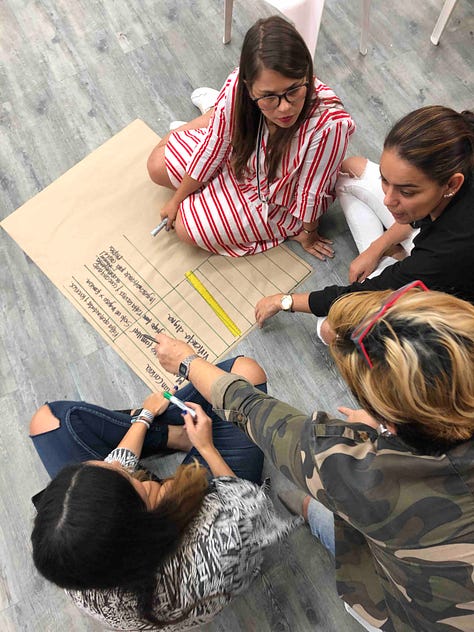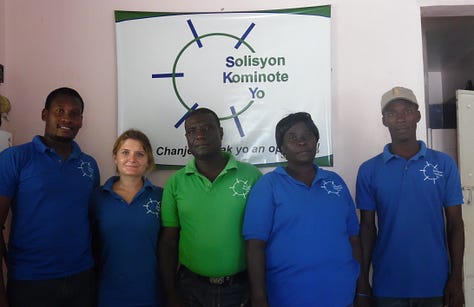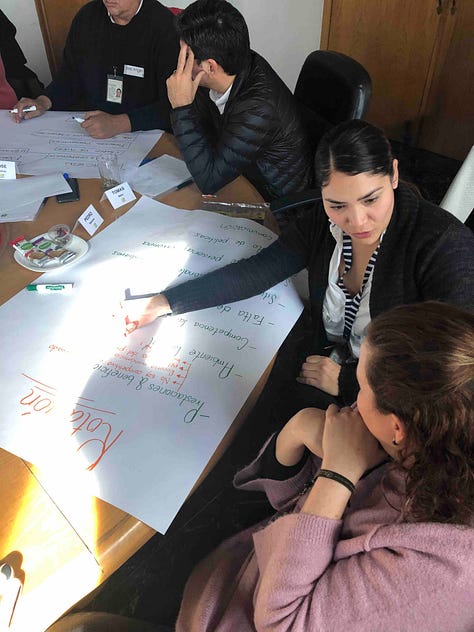What the 13 team-building and (re)calibrating tools help you do
They help you align, create psychological safety, prioritize, define roles, empathize, build a changemaking culture, and so much more...
-Today’s free tool: T2.5 - EISENHOWER CHECK-IN
-Note: Reach out to me if you’d like to explore consulting, facilitation support, setting up a professional development workshop/ series, etc.
I designed and included 13 tools in the first two toolkits - TOOLKIT 01: BUILDING OUR CHANGEMAKING TEAM and TOOLKIT 02: (RE)CALIBRATING OUR TEAM’S EFFORTS. These should be valuable to ANY and EVERY new and existing team. Following are some of my thoughts about what these tools should help you and your team achieve.









T1.1 OUR TEAM (p. 110)
Have conversations about who should be on your team now and in the future. It should help you be more expansive and inclusive.
Make sure that you’re considering and tapping into the experience and expertise of all of the people in your network and your network's network
T1.2 OUR WHY (p. 112)
Align your individual WHYs with an overall team WHY
Align your team WHY with an important WHY for the community and/or clients you’re serving or hope to serve
T1.3 OUR CORE VALUES (p. 114)
Have conversations about your individual core values and align around some shared team core values
Stay on track to your WHY
T1.4 OUR COLLABORATIVE CULTURE (p. 116)
Prioritize designing strategies that create a sense of psychological safety
Build and (re)build the necessary foundation for high-performance collaboration
T1.5 OUR SUPERPOWERS (p. 118)
Show appreciation for team members and be joyful
Identify potentially hidden strengths
T2.1 LEVEL SETTING CHECK-IN (p. 126)
Start meetings/ conversations with shared understanding and expectations
Avoid incorrect assumptions and conflict
T2.2 RACI STRUCTURE CHECK-IN (p. 128)
Define and (re)define everyone’s roles for each project/activity
Work effectively, efficiently, and avoid misunderstandings about who should be doing what
T2.3 GOLDILOCKS CHECK-IN (p. 130)
Have check-in conversations focused on searching for a balance between being short-term and long-term focused
Pulse check how your team’s doing
T2.4 STAKEHOLDER ENGAGEMENT CHECK-IN (p. 132)
Consider and talk about everyone's engagement levels
Be intentional about how people might move from one engagement level to another over time
T2.5 EISENHOWER CHECK-IN (p. 134)
Prioritize your efforts by assessing urgency versus importance
USE THE QR CODE/ HYPERLINK TO GO TO THE GOOGLE SHEET OF THE TOOL.
T2.6 EFFECTIVENESS + EFFICIENCY CHECK-IN (p. 136)
Prioritize by looking through the lens of efficiency and effectiveness
T2.7 KANBAN CHECK-IN (p. 138)
Have structured conversations about the status of your activities/ projects
Keep things from falling through the cracks
T2.8 THREATS + REWARDS CHECK-IN (p. 140)
Have conversations about what might be making team members feel either threatened or rewarded
Look at how team members are affected by things in often unspoken ways
I hope you found this helpful. Please do reach out to me at gregvankirk@gmail.com or on LinkedIn if I can be of help. And if you haven’t purchased IT’S WHAT YOU SET IN MOTION: A TOOLBOX FOR COLLABORATIVE CHANGEMAKING, go to collaborativechangemaking.com.
And please share this with anyone who you think might benefit. Much appreciated!



